GOSPELL GR-228BP DRM Receiver Review
Kevin Ryan looks at a handy DRM receiver.
Digital Radio Mondiale (DRM), a digital solution for the AM and FM bands, is very much alive, especially in Asia. Unusually Indonesia is also going to use it in Band III from 174 to 202MHz with the rest allocated to DAB.
The fate of DRM on shortwave is mainly in the hands of the international broadcasters although there may be a growing interest among the low-powered European broadcasters such as SE-TA2.
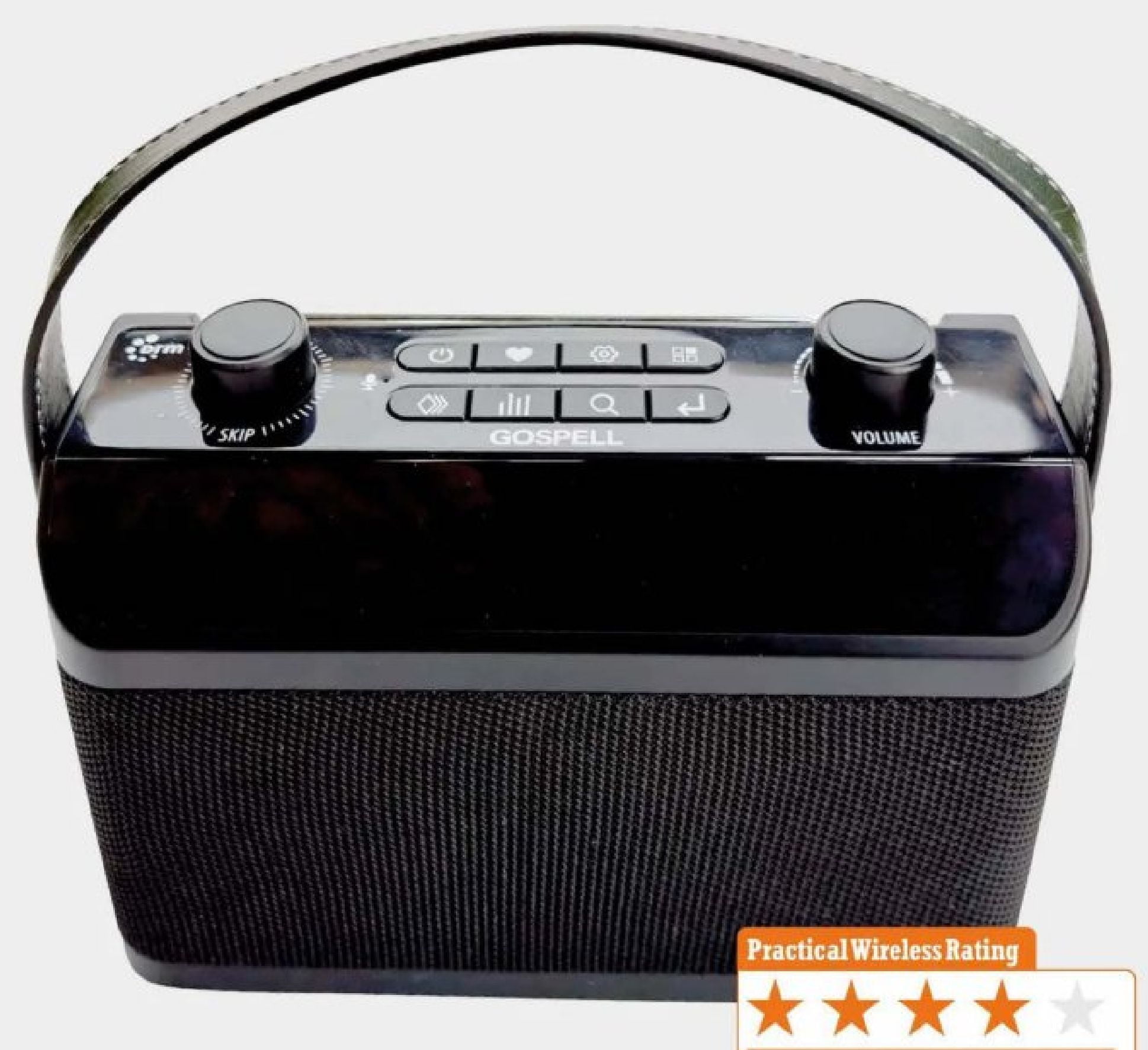
I’ve used several DRM capable receivers over the many years since DRM broadcasts have been available. China is currently the leading manufacturer of DRM receivers after production of portable DRM receivers faltered in India. Gospell is the leading manufacturer of AM/FM/DRM receivers but with limited production runs.
Gospell GR-228BP
The GR-228BP is one of the many DRM receivers produced by this company. The specification is available on the Gospell website, including descriptions of the rear connections and the eight function keys on the top of the radio. The GR-228BP has the same facilities as many DAB/FM receivers. Instead of DAB the digital decoder is DRM and the DRM radios usually have an external antenna socket for AM broadcasts.
The Quick Start Guide included with the radio is the only documentation available and it is a basic user guide. My radio shipped with a European style two-pin wall adaptor and also included was a five metre long wire antenna meant for indoor use. The radio uses a micro-USB plug (5V@700mA) so many mobile phone or tablet chargers will work.
Power
The radio has an internal chargeable battery rated at 3.7V 2600mAh according to the plate on the receiver. This is the same overall capacity as the NiMH batteries I use in my Pure DAB radio and seems minimal to me. Fully charged they provide about 20 hours of listening time so I expected the same from the GR-228BP. However, it doesn’t last anywhere like this time in the DRM mode. I checked that the radio was at 100% charge in the morning, used it to decode DRM for an hour and then switched to standby. In the afternoon battery capacity was down to 39% with the radio giving a ‘Low Battery’ warning. There seems to be a threshold in battery mode below which the DRM decoder is not enabled.
Making repairs
There is no obvious way to open the receiver to make any repairs such as replacing the battery pack. The only screws anywhere on the case are the two TORX type ones for the carrying handle. Undoing them didn’t seem to release the control panel from the chassis but I was only applying a gentle pressure. The main body of the receiver is circled by a band of loudspeaker type cloth, Fig. 1, securely held in place obscuring any recessed screws.
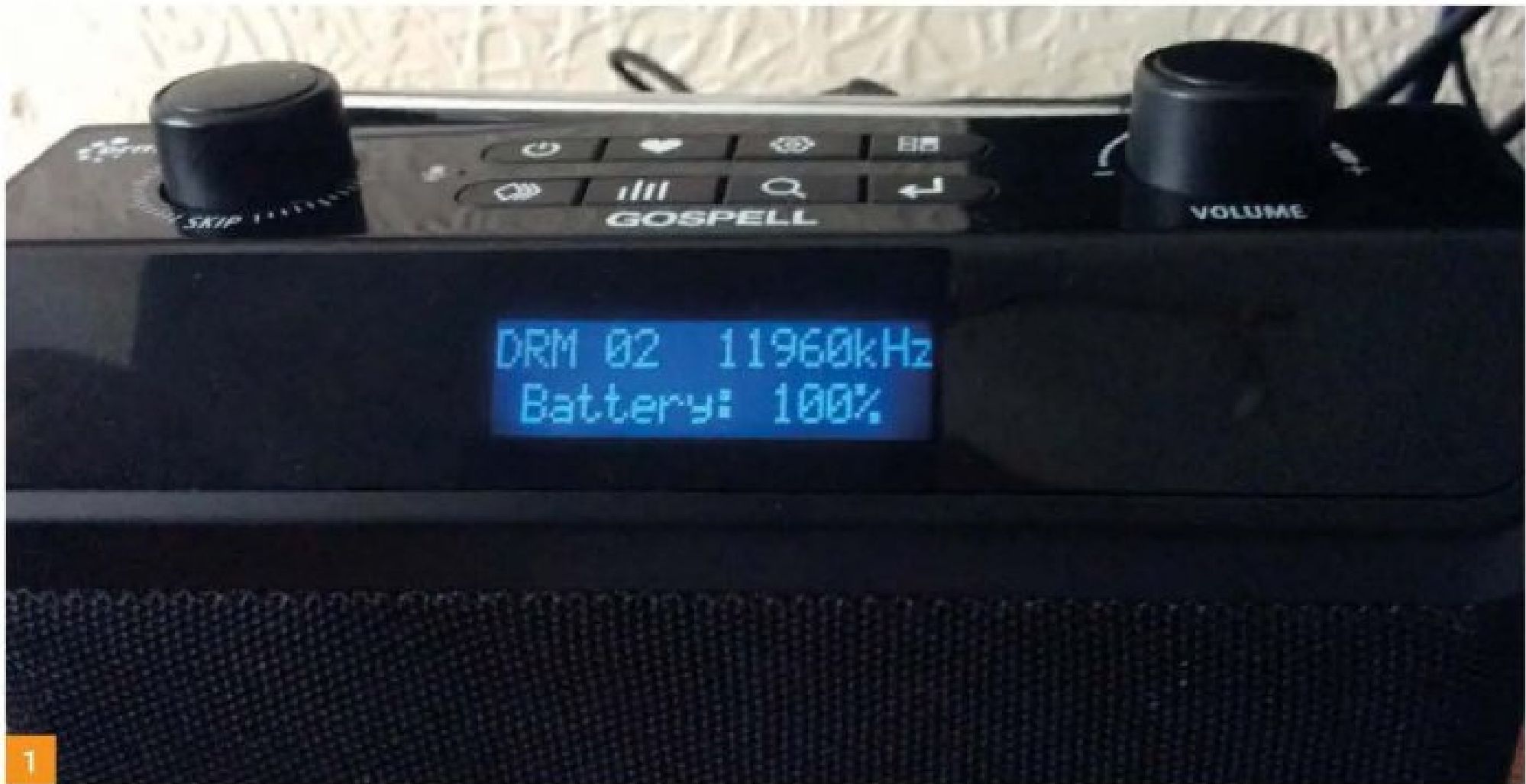
DRM mode
The Quick Start Guide advises the listener to continually press the Mode button, Fig. 2, until DRM shows on the display. It takes two presses to move from one mode to the next. The ‘Skip Rotary’ knob now tunes the radio to a desired frequency. This rotary is the type you have to turn many times to move forward in frequency. I discovered that by using the Band button, Fig. 2 again, the radio has a pre-programmed list of broadcast bands starting at FM and MW and will tune to the start frequency for each of the shortwave bands. This feature works in the DRM mode.
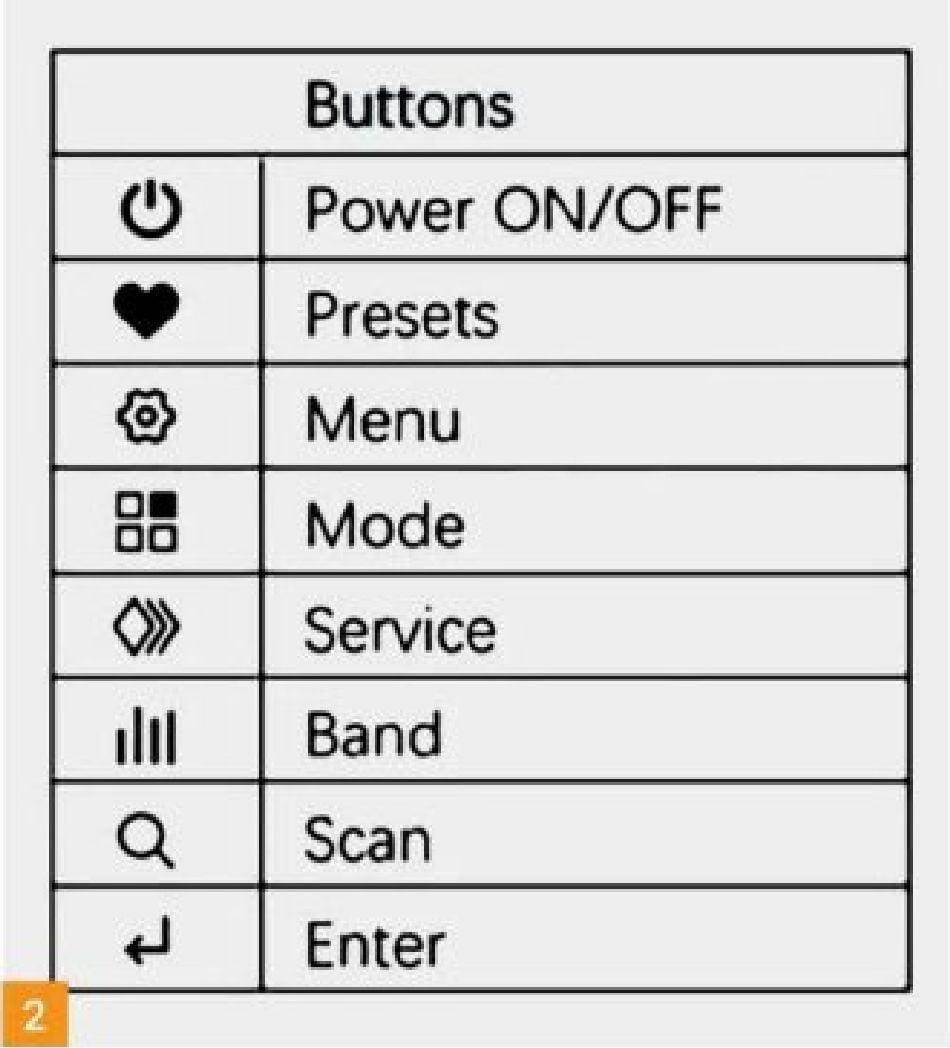
Offairtesting
I found that the 660mm telescopic antenna didn’t provide enough signal for consistent reception of the DRM broadcasts. All my DRM listening tests used the multi band antenna in the loft to provide a higher level of signal.
Two-line display
The 16-character two-line LCD display is limited in the amount of information it can provide. When starting to decode a DRM service the display shows the frequency and the word ‘Tuning’. It will show this status even when there is no signal pre-sent. A strong signal will light up the basic signal strength indicators.
Technical menu
All my other DRM receivers had a ‘hidden’ techni-cal/engineering menu that showed many of the DRM transmission parameters. The GR-228BP menu is opened by long-pressing the Service button and it has several screens of information. The tuning knob moves forward and back among the various screens.
Screen one, Fig. 3, has the tuned frequency, signal strength in dBμV, the SNR in dBs and the BER (Bit Error Rate) in scientific notation (e.g. 83e-3). I believe the signal strength is a measure of the RF power in the RF channel. On an empty frequency the signal strength is around 7dBpV. DRM is a multi-carrier system and the SNR is calculated from the average of Modulation Error Rate (MER) of each of the carriers used for the FAC cells in the 4.5kHz bandwidth above the nominal carrier frequency. Once the data bits are extracted from the carriers it is possible to derive the Bit Error Rate as a measure of how many ‘bad’ bits have been received.
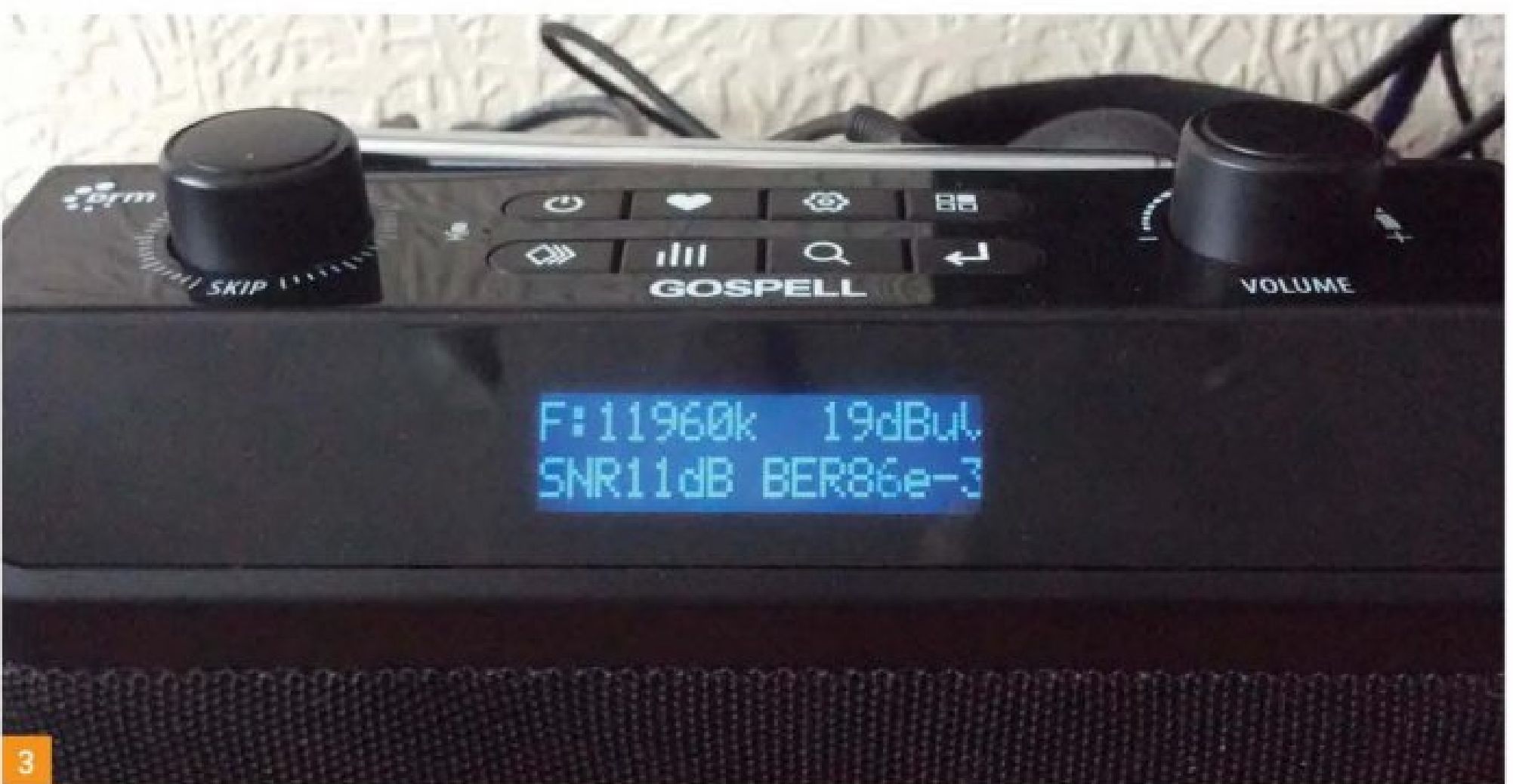
Screen two, Fig. 4, details the status of the Cyclical Redundancy Check (CRC) for FAC (Fast Access Channel), SDC (Services Description Channel) and MSC (Main Services Channel) as either ON, OFF or N/A. For decoding of audio and data to happen all three need to be ON. I’m assuming that ON means that the CRC tests true, OFF is available but testing false and N/A means the received data is too damaged to begin the checking process.
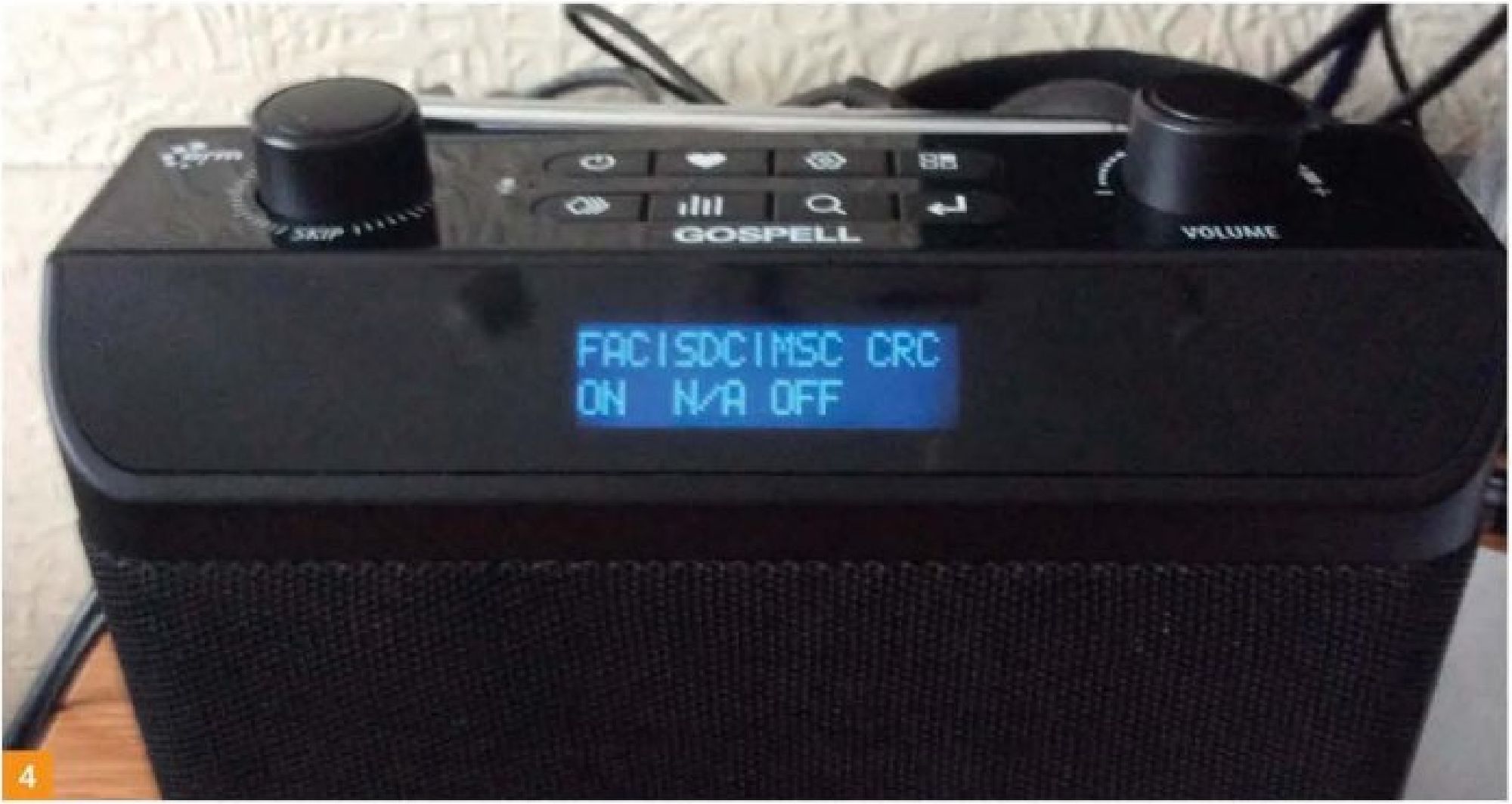
Screen three, Fig. 5, has the DRM Mode (A-D, but usually A or B), the transmission bandwidth (BW) and the QAM encoding rate for the SDC and the MSC. The FAC is always 4-QAM. Screen four has the data Protection Level and the packet Interleaving rate (usually two seconds but can be 400mS). Screen five has the service label for Service 0 and the audio encoding scheme.
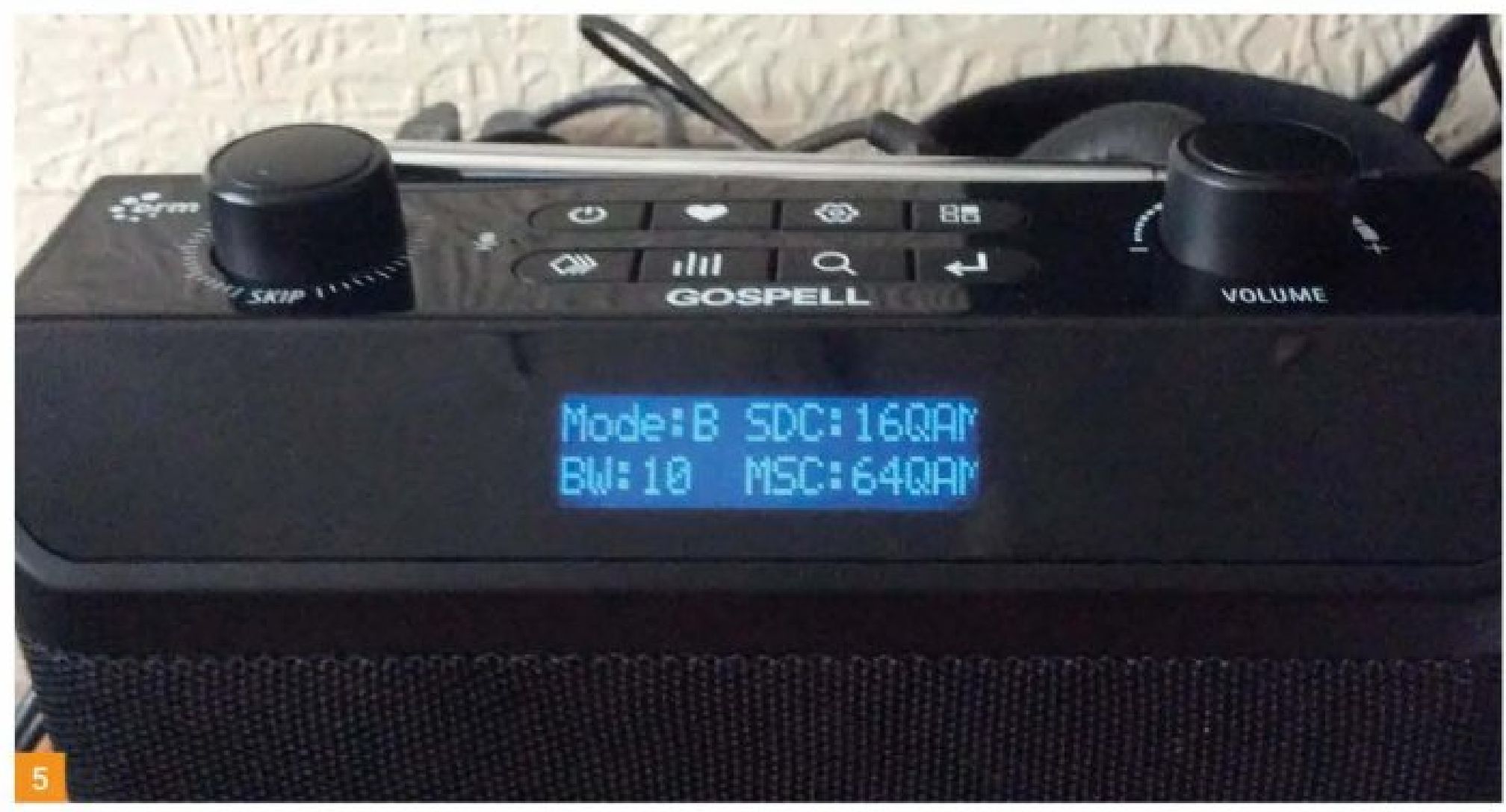
The other screens will have the details on services S1 to S3. In the case of the BBC WS the S1 service will usually list the Journaline digital text service (see below) as BBC WS JL. Typical content of each screen is listed in Table 1.
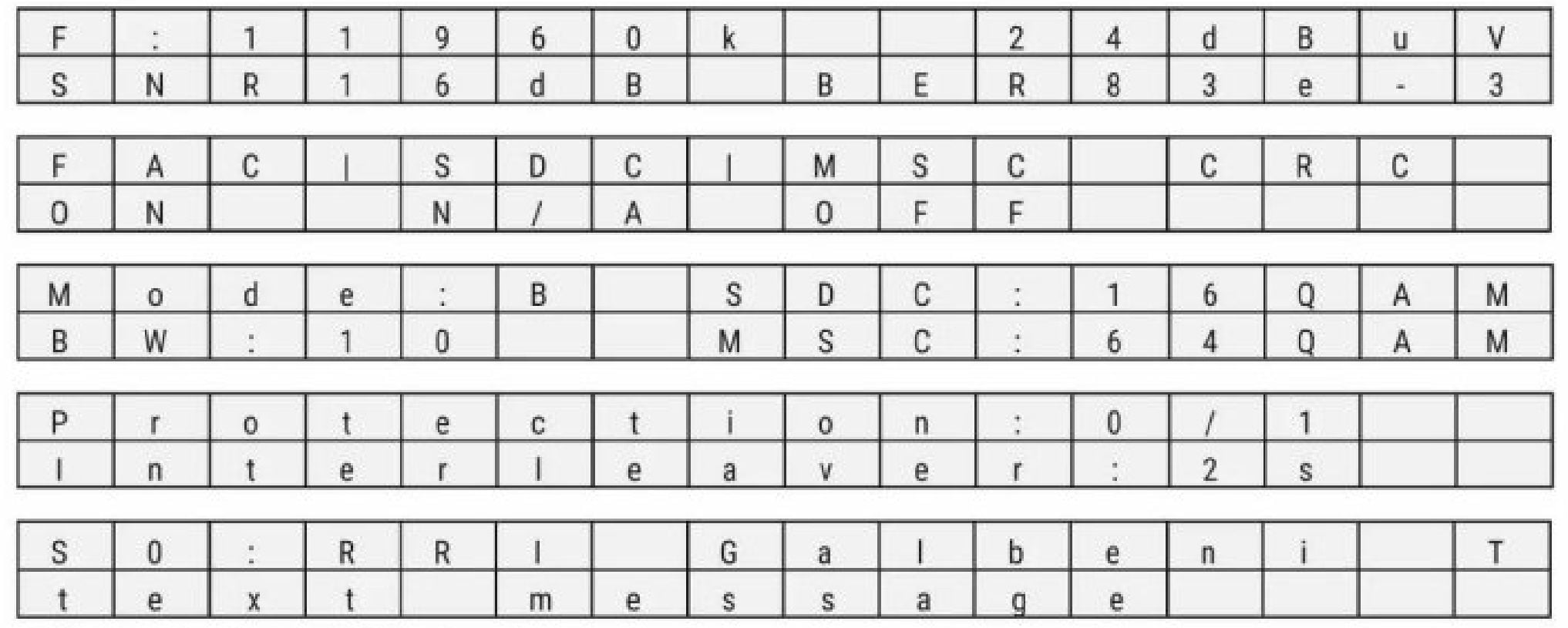
DRM tests using RRI
I had impressive results with all three morning broadcasts to Western Europe: French at 0500UTC on 11740kHz, English at 0530UTC on 11960kHz and German at 0600UTC on 11620kHz. They have slightly different beams and different encoding schemes. As a comparison, using the DRM decoder plugin in the SDR Uno console I had trouble decoding the English transmission, possibly because it typically uses 64-QAM instead of 16-QAM for the other two. RRI DRM transmissions have since been reduced in number.
Journaline
The GR-228BP decodes Journaline, the digital text system for DRM. Only the BBC WS for Europe and Funklust use this system. I tested the Journaline decoder on the European service from the BBCWS on 3955kHz. The Journaline decoder detected the service with the display showing ‘Receiving….’ and that quite quickly changed to’ B_B_C _N_e_w_s’. You open the viewer by hitting the Return button.
Journaline takes a few minutes to build up the list of news headlines and the single sentence news article. The Skip knob lets you scroll up and down the list of news headlines and a second press of the Return button opens up the associated text as lines of text that flow over the 32 characters of the two-line display. Various characters (*,↑ ,↓ , +, ►) delimit the text to help you move up and down the screen. The Settings button moves you back up the Journaline tree.
The Journaline data decoded more quickly on the receiver than usually happens in the DReaM based software decoders. Journaline used to carry three feeds but 3955kHz only had the news from Europe and that probably helped with performance.
AM performance
The AM mode covers the extended medium wave band (522 -1710kHz) and shortwave from 2.3 to 26.1 MHz. Reception on MW is quite noisy compared to the SDRPlay RSP1A using its 6kHz filter and with the noise reducer on. The Gospell seems have no noise reduction built into the firmware and it shows. In fact, the GR-228BP magnified the digital background noise picked up by my antenna.
The radio only demodulates AM-DSB and you can’t select sidebands. The GR-228BP has a better performance on shortwave and is on a par with SDR RSP1A.
Interference rejection
I don’t have any test equipment and relied on an off-air test in the 19m band. The same antenna is split and fed to both an RSP1A and the Gospell GR-228BP. My wanted signal was Radio Free Europe on 15255kHz in Turkmen from Thailand measuring -74dBm on the SDR RSP1A. The unwanted signals were CGTN Radio from China aimed at Europe on 15245kHz at -55dBm and Adventist World Radio on 15265kHz in Turkish measuring -65dBm.
My wanted signal was audible but with significant ‘splash’, especially from China. Shortwave signals from transmitters in China are typically modulated to be ±8kHz, easily spreading into adjacent channels. Other tests with three stations spaced 5kHz apart and with tighter control of the sidebands than CGTN use were quite pleasant to listen to.
FM reception
The skip/tuning knob and the scan button work quite well on this band. The radio supports RDS that you scroll through using the menu button. There are a couple of things to note in that the radio does not display the station name (it just says FM rather than BBC R2, for example) and relies on the radio text to scroll the station name on line two of the display.
On most stations I tuned in the display remained at <Radio text> but eventually my local station BBC Radio Berkshire displayed a scrolling band of text. My conclusion was that the RDS decoder needs a strong signal to work consistently.
Bluetooth
The GR-228 works fine as a speaker. I used the RadioPlayer app on my phone as the audio source and I could Play and Pause the audio and adjust the volume on the GR-228.
A unique thing about this radio is that is has a microphone and the Enter button can control a connected mobile phone. It didn’t work quite as described in the manual. I could answer a call but couldn’t reject it or end the call. That may well be a flaw in the Android software on my mobile. To be honest I can’t quite see why Gospell implemented this feature.
USB/SD connect
Both these options worked as expected. The controls are basic and the radio has no connections to uPNP devices that you find on DAB receivers based on Frontier Silicon modules. I would have liked to record either audio or DRM l/Q signals to the USB device.
Buying options
I purchased the GR-228BP on Amazon’s UK website. I couldn’t fault the service provided by Fuzhou Gulou Ltd. in terms of shipping and later answering a few technical questions. The cost was £, including a promotion and delivery charge of £. The latest list price on Amazon is £ but I have seen it as high as £ and this continues to vary with the exchange rate.
Worth buying?
Is it worth the outlay to own a DRM receiver, especially when shortwave seems to be in decline again? As an enthusiast my answer is yes, mainly because the convenience of a receiver hasn’t yet been beaten by apps and PC based solutions. The GR-228BP is a ‘no frills’ receiver limited mainly by its two-line display.
It is true that shortwave broadcasting has been in decline for many years but new DRM services are coming on air, especially from Germany. Radio SE-TA2 registered a new regular broadcast for the B23 broadcasting season, the enigmatic Music 4 Joy is exploring the use of DRM and there is Funklust and C.M. Obrecht’s occasional DRM broadcasts.
DX possibilities are there from RNZI, WINB and China National Radio with the latter being reported on a more regular basis. It is worth remembering that DRM needs a good signal level and you really need an external antenna for the best results.
When you purchase through links on our site, I may earn an affiliate commission. Here’s how it works.

